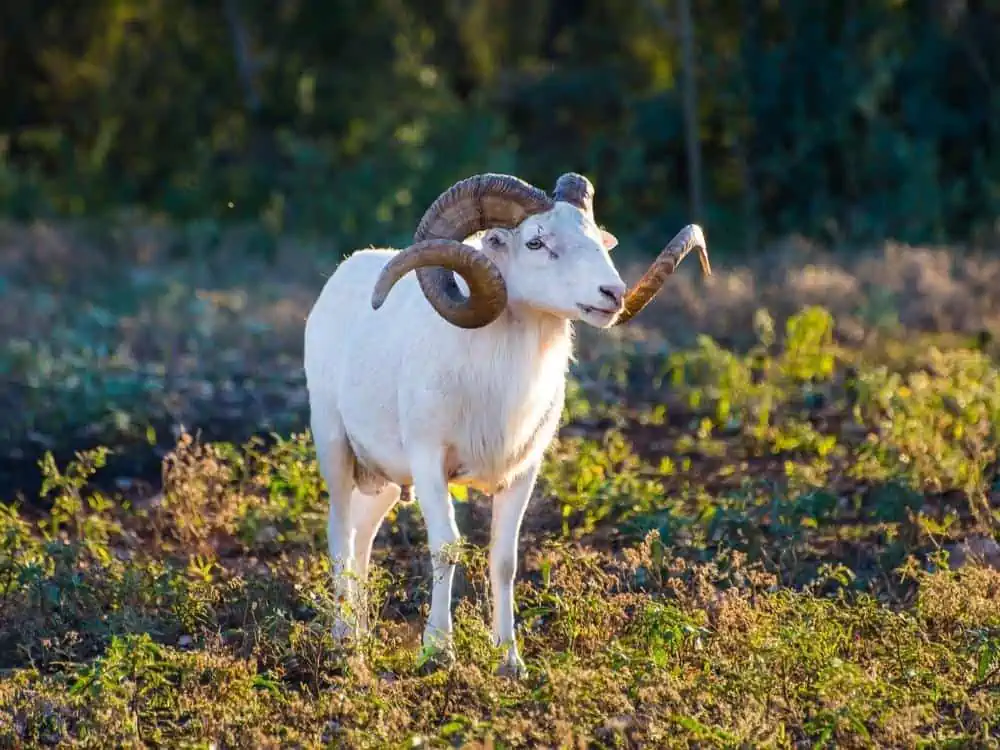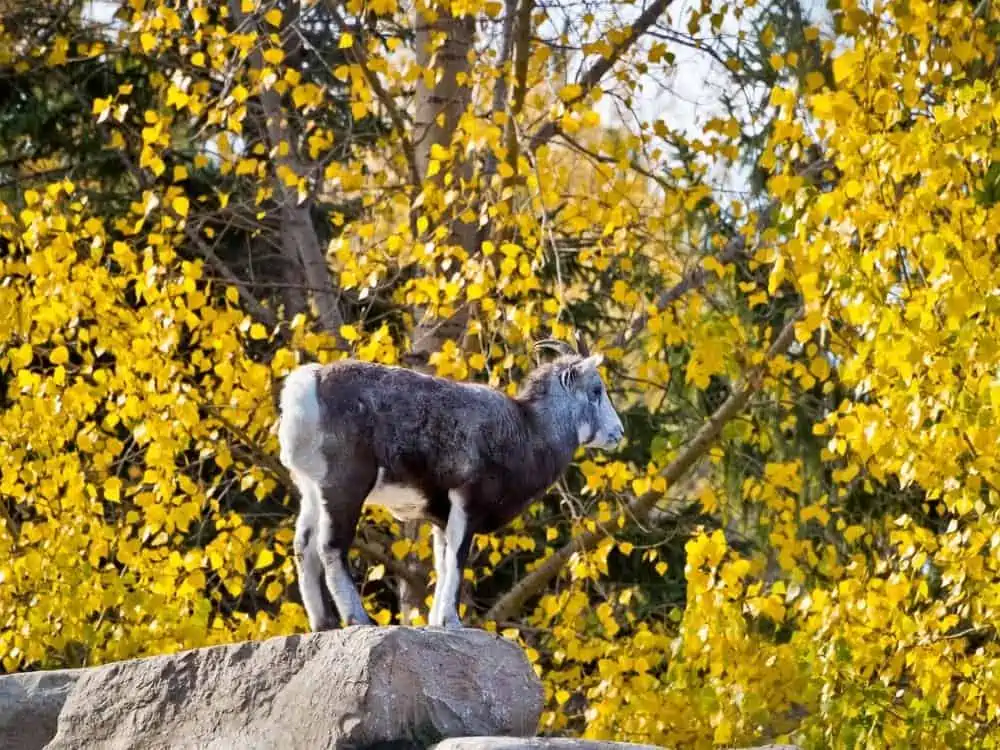Hunting for ram is a sport enjoyed by many. Finding an old ram with long horns and adding it to a wall collection can be the best experience of someone’s hunting season.
However, many people don’t like hunting without using the whole animal. If you’re after a Texas Dall Ram, can you eat them as well?
Texas Dall Ram is edible as long as it’s prepared properly. The entire ram can be prepared and eaten, although many hunters only eat certain parts because the rest is extremely tough.
If you want to use the whole sheep, it’s possible to make jerky and sausages out of the gamier parts of the animal.

Is It Okay To Eat Texas Dall Ram?
It is possible to eat the Texas Dall Ram, although many people don’t recommend it. Since the ram is an adult, it’s gamier meat and can be tough to chew.
However, with the proper seasonings and preparations, you can eat Texas Dall Ram meat. As long as it’s been hunted legally, it’s legal to eat Texas Dall Ram. If you find some on the roadside, you technically can eat that, but you probably shouldn’t for health and safety reasons.
However, you can shoot and eat your own Texas Dall Ram within the proper space or during hunting season. Most hunters prefer to cook and eat younger ram, but it’s not always possible to get a hold of young sheep. For trophy hunting, older rams have the best horns.
They have tough, gamey meat and will need a lot of seasoning or to prepare the meat in a specific way.
What Parts of Texas Dall Ram are Edible?
Like a sheep, you can eat almost any part of the Texas Dall Ram. However, it’s not good meat for steaks or barbecues. Instead, many hunters recommend using ram meat for jerky, which is inherently dry and gamey. The texture won’t be as noticeable in jerky or sausages.
It’s most common to eat the following cuts of ram or sheep:
- Shoulder roast
- Ribs
- Loin chops
- Legs
However, these are usually from a lamb, which is much more tender than a grown sheep. You won’t be able to get the same amount of good meat from a grown sheep, even if it’s bigger and bulkier. It’ll be mostly muscle and extremely gamey, tough meat.
Whether you brine the meat, make it into jerky, or eat it like sausage, there are ways to enjoy Dall Ram. No matter what you do with it, it’s not going to taste as good as venison, bison, or beef. However, you can still make any regular part of the ram edible.
Does Texas Dall Ram Taste Good?
Sheep, in general, is a slice of unique meat to eat. Because sheep and ram eat mostly grass, many describe the flavor as gamey. However, it can be soft and tender, depending on how it’s prepared and how old the animal was when slaughtered.
Unfortunately, Texas Dall Ram is usually hunted for their heads. A Dall ram’s head with massive horns is an excellent addition to any trophy wall, and the older the ram is, the larger the horns are.
However, the older the sheep gets, the more tough and gamey the meat becomes. It is hard to find delicious, soft sheep’s meat past a few years old. This is why lamb meat is so popular in gyros and other lamb dishes. The younger a lamb is, the more tender and juicy the meat.
Most Dall Ram is on preserves and can only be hunted at certain times of the year. If they’ve been raised for hunting trips, they have been fed high-quality grass and oats and probably have a better taste than wild Dall Ram.
Although adult ram meat can be tough and gamey, it is still edible. Many chefs swear by lots of seasonings, smoking, or making ram meat into jerky to cut down on the texture and flavor of the veal. It’s not ideal for steaks or burgers, but it works well with sausages and dried meat.

What Is Texas Dall Ram?
A Texas Dall Ram is a type of Corsica ram. Over the last two hundred years, sheep breeders cross-bred their sheep to create some of the strongest breeds with enormous horns.
The Corsica breeds of sheep include the Mouflet, Black Hawaiian, and many others, and more recently, the Texas Dall.
The Texas Dall is a unique breed of Corsica sheep because it’s all white, from its horns to its hooves. Most other Corsicas have a bit of black, different colored feet, or are primarily gray and black. However, the Texas Dall is pure white, making it beautiful and easy to spot while hunting.
Like all Corsica sheep, the Texas Dall ram has two continuously growing horns. They never shed and grow throughout the ram’s entire life. The older a ram is, the larger his horns and, more impressive, a trophy for hunters.
Is Texas Dall Ram Easy to Hunt?
Dall Ram is a coveted prize by many hunters for its curled horns and whiteheads. Although they don’t make the best eating, Dall Ram heads make excellent additions to any hunter’s trophy collection.
The hunting process for a Dall Ram involves getting a hunting license for your state or traveling to a state where Dall Rams are available. Many ranches and preservations offer hunting trips that don’t disturb the ecosystem but allow you to hunt for Dall Rams as though they were in the wild.
These ram hunts are expensive, sometimes running over $20,000 per excursion. However, they are permitted year-round because the rams are raised on private property and not part of a nature preserve or limited by a hunting season.
Private ram hunts often result in tastier meat as well, as humans have fed the rams.
The most common place to hunt Dall Rams in the wild is the Alaskan nature preserves, where hunters can take mature rams between August 10th and September 20th each year.
These rams are limited by their age and how long their horns are – hunters aren’t permitted to shoot younger rams or Dall ewes.
Sources:
- https://www.tiogaboarhunting.com/history-of-the-texas-dall/
- https://www.huntingnet.com/forum/hogs-exotics/246802-texas-dall-sheep-meat.html
- https://farmingbase.com/why-do-people-eat-lamb-and-not-sheep/
Christian Linden is a seasoned writer and contributor at Texas View, specializing in topics that resonate with the Texan community. With over a decade of experience in journalism, Christian brings a wealth of knowledge in local politics, culture, and lifestyle. He holds a Bachelor's degree in Communications from the University of Texas. When he's not writing, Christian enjoys spending weekends traveling across Texas with his family, exploring everything from bustling cities to serene landscapes.











